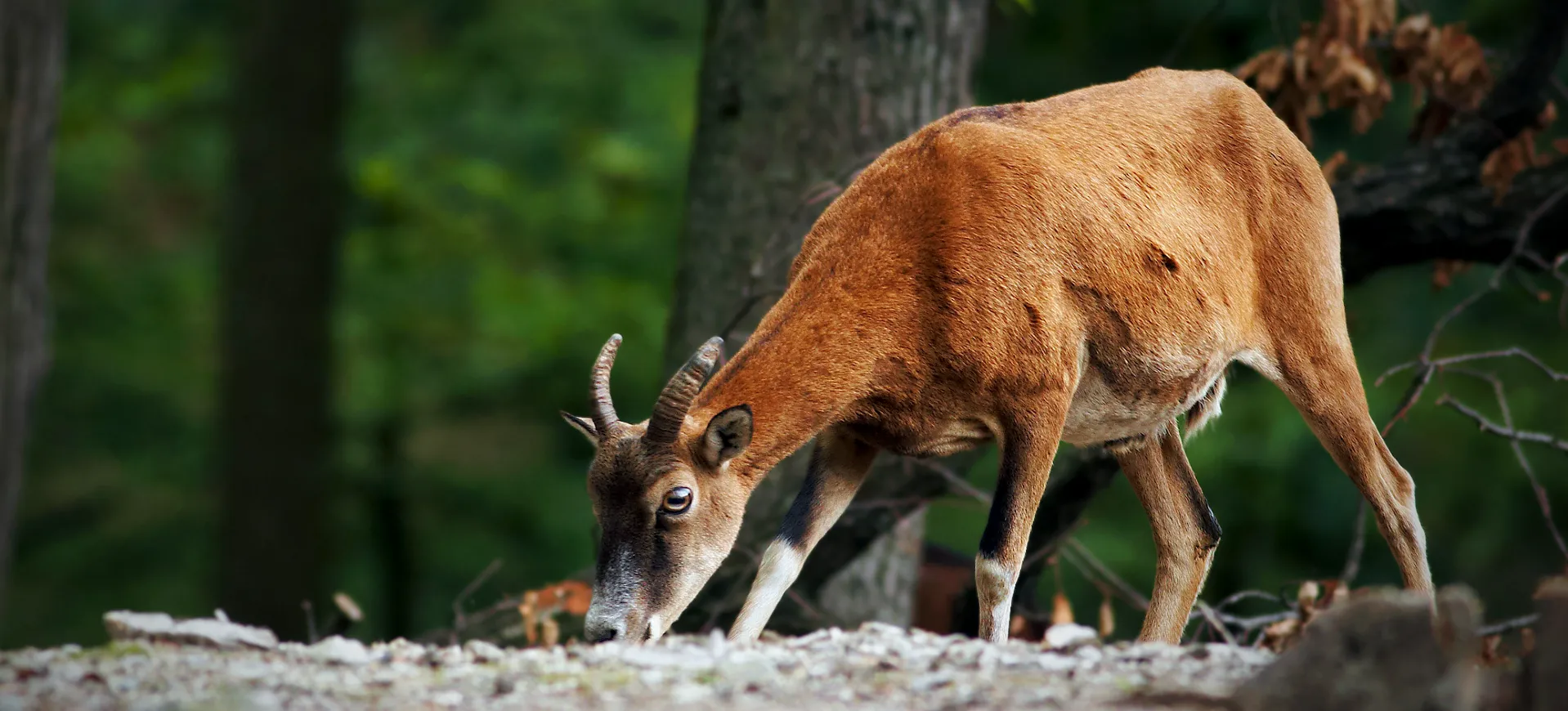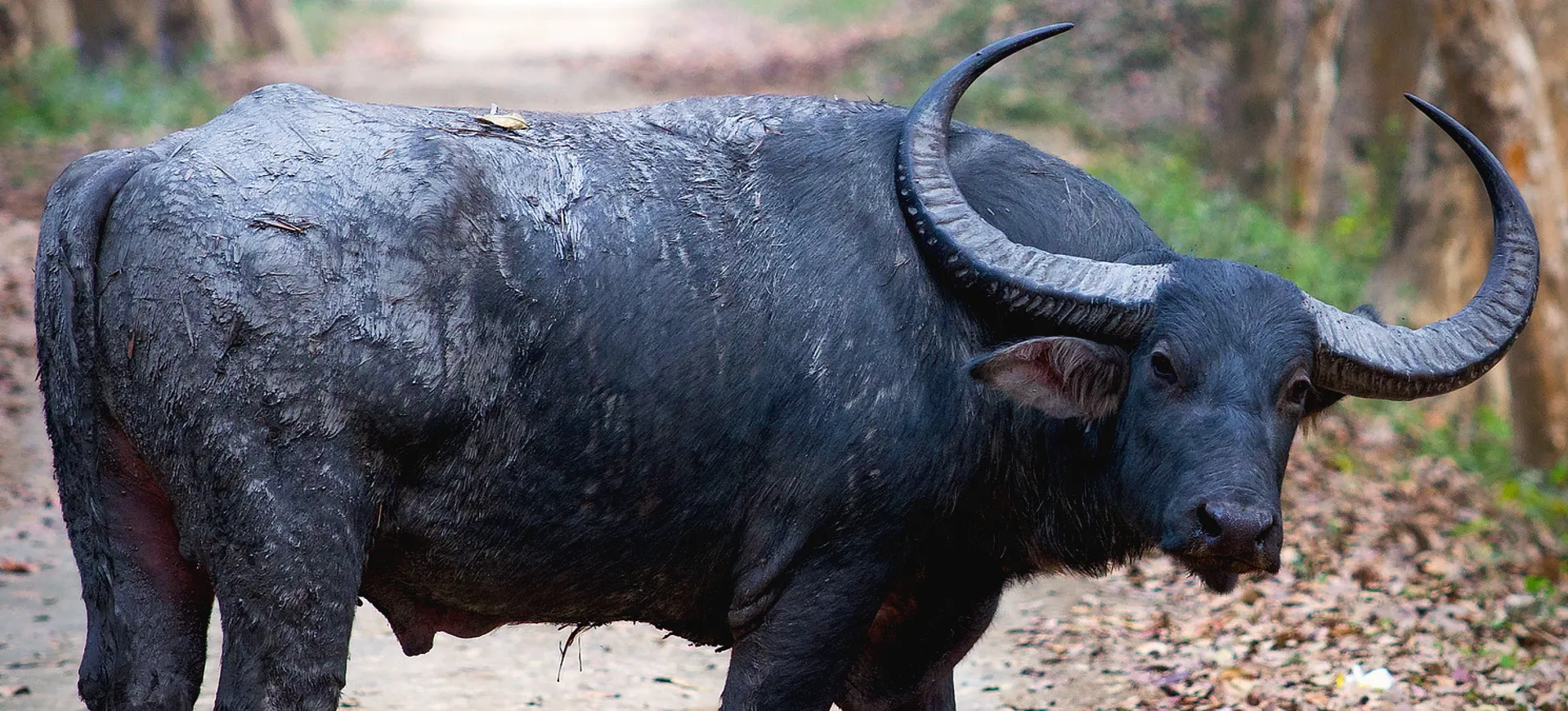Overview
The Rhim Gazelle, also known as the Slender-horned Gazelle (Gazella leptoceros), is a species of gazelle that is remarkably adapted to life in the desert. Native to the Sahara desert in North Africa, it is one of the most desert-adapted gazelle species. Characterized by its slender body, long and thin legs, and relatively long neck, the Rhim Gazelle is well-suited to the harsh, arid environments it inhabits. Its coat is pale sandy-colored, providing excellent camouflage against the desert backdrop.
One of the most notable features of the Rhim Gazelle is its horns, which are long, thin, and slightly curved. Both males and females have horns, though those of males are generally longer and more curved. These gazelles are highly adapted to their desert habitat, with adaptations such as wide hooves for walking on sand and a light coat color that reflects sunlight. Despite their fragile appearance, they can survive in extremely harsh conditions.
Rhim Gazelles are nomadic, moving constantly in search of food and water. They can absorb moisture from plants and go into water for long periods. They feed on leaves, grasses, and shoots, particularly favoring acacia. Their elusive nature and the inaccessibility of their habitat have made them one of the least studied of all gazelle species.
Taxonomy
Kingdom
Phylum
Class
Order
Family
Genus
Species
Type
Physical Description:
The Rhim Gazelle is a small, slender antelope known for its elegance and agility. They typically have a head-body length of about 3.5 to 4 feet, with a relatively long neck and slim build. Their fur is pale and sandy, blending perfectly with their desert surroundings. This coloration not only provides camouflage but also helps in reflecting sunlight to keep them cool.
Both sexes have horns, which are long, slender, and slightly curved, measuring up to 14 inches in males and slightly shorter in females. The gazelle’s eyes are large and positioned on the sides of their head, providing a wide field of vision to spot predators. Their legs are long and thin, adapted for running at high speeds, and their wide hooves are specialized for walking on soft desert sand.

Lifespan: Wild: ~10 years || Captivity: ~15 years

Weight: Male: 55-66 lbs (25-30 kg) || Female: 44-55 lbs (20-25 kg)

Length: Male & Female: 39-47 inches (100-120 cm)

Height: Male & Female: 24-30 inches (60-75 cm) at the shoulder

Top Speed: 40 mph (64 km/h)
Characteristic:
Native Habitat:
The Rhim Gazelle is indigenous to the Sahara Desert and is renowned for its extreme aridity and challenging living conditions. This environment is characterized by vast sandy dunes, gravel plains, and sparse scrubland areas, which form these gazelles’ primary habitat. Adapted to survive in one of the harshest climates on Earth, the Rhim Gazelle endures extreme temperatures and water scarcity. The Sahara’s landscape, while bleak, is crucial for the survival of this species, as it has evolved to thrive in these specific conditions.
In the Sahara, the Rhim Gazelle showcases remarkable physiological and behavioral adaptations to cope with the desert extremes. They lead a nomadic lifestyle, constantly moving in search of food and water, covering large distances to find sustenance. Their diet mainly consists of the sparse vegetation in their habitat, which helps them conserve water and survive the arid conditions. The Rhim Gazelle’s ability to thrive in such a challenging environment highlights its importance in the desert ecosystem, contributing to the ecological balance of its native habitat.
Climate Zones:
Biomes:
WWF Biomes:
Biogeographical Realms:
Continents:
Diet:
Diet & Feeding Habits:
The Rhim Gazelle, primarily a browser, has a diet of various desert vegetation, which is crucial for its survival in the arid Sahara. They feed on leaves, twigs, and fruits, selecting plants that are rich in moisture. This dietary habit significantly reduces their dependence on water sources, a critical adaptation in their water-scarce habitat. Extracting sufficient moisture from their food allows these gazelles to endure long periods without direct water intake, demonstrating their specialized adaptation to desert life.
In their search for food, Rhim Gazelles exhibit a remarkable ability to locate and consume plant species that many other desert animals typically avoid. Their diet is not static but changes with the seasons, adapting to the availability of different vegetation types throughout the year. During periods of drought, which are common in their desert habitat, Rhim Gazelles can survive on minimal food and water. This resilience is a key aspect of their survival strategy, allowing them to withstand the harsh and fluctuating conditions of the desert ecosystem.
Mating Behavior:
Mating Description:
The mating behavior of the Rhim Gazelle, while not extensively documented, is presumed to be similar to that of other gazelle species, which are typically polygynous. During the breeding season, males are known to establish and defend territories, which is instrumental in attracting females. The competition among males for access to females primarily involves displays of strength and agility rather than engaging in direct combat. This method of competition is thought to reduce the risk of serious injury, which is vital for survival in their harsh desert environment.
The reproductive cycle of the Rhim Gazelle involves a gestation period of approximately six months, culminating in the birth of a single calf. Females typically choose secluded areas for birthing, which provides a degree of protection for the vulnerable newborn from potential predators. The newborn calves are remarkably intelligent and can stand and walk shortly after birth. This early mobility is a crucial adaptation for survival in the open desert, where the risk of predation is high, and the ability to move quickly is essential for the calf’s survival.
Reproduction Season:
Birth Type:
Pregnancy Duration:
Female Name:
Male Name:
Baby Name:
Social Structure Description:
The social structure of the Rhim Gazelle is characterized by its adaptability to the challenging desert environment. Typically, they are observed to live in small groups, although the size and composition of these groups can vary depending on environmental conditions and resource availability. During periods of abundant resources, Rhim Gazelles may gather in larger aggregations, while in times of scarcity, they often disperse into smaller units or even lead solitary lives. This flexibility in social organization is a key survival strategy in the unpredictable Sahara desert.
Within their groups, Rhim Gazelles exhibit a range of social behaviors that are essential for their survival. Adult males often establish and defend territories, particularly during breeding, while females and their young may form nursery groups. These social structures facilitate efficient resource utilization and predator avoidance. Communication among group members involves visual and auditory signals, which help coordinate movements and maintain group cohesion. The social dynamics of Rhim Gazelles are also influenced by seasonal changes, with group sizes and behaviors adapting to the shifting availability of food and water in their arid habitat.
Groups:
Conservation Status:
Population Trend:
Once widespread across the Sahara desert, the Rhim Gazelle population has experienced a significant decline in recent decades. This decline is attributed to habitat loss, hunting, and environmental changes. Currently, the Rhim Gazelle is found in fragmented populations across various countries in the Sahara, including Algeria, Tunisia, Libya, Egypt, Mali, Niger, Chad, and Sudan. These isolated populations face challenges in maintaining genetic diversity and resisting environmental pressures, which are crucial for the species’ long-term survival.
The small and scattered nature of Rhim Gazelle populations makes them particularly vulnerable to external threats. Their numbers are generally low in areas where they still exist and continue to face pressure from human activities such as poaching and habitat encroachment. Environmental factors, such as climate change and desertification, further exacerbate their struggle for survival by altering their natural habitat. Conservation efforts are therefore critical to prevent further decline and ensure that these graceful animals continue roaming the Sahara desert’s vast expanses.
Population Threats:
The Rhim Gazelle faces many significant threats contributing to its declining population. One of the primary threats is habitat loss due to expanding human settlements and agricultural activities. This encroachment reduces the available space for the gazelles and fragments their habitat, making it difficult for them to access traditional feeding and breeding areas. Developing infrastructure like roads and fences also disrupts their natural migration patterns and isolates populations.
Another major threat to the Rhim Gazelle is poaching and illegal hunting. Despite legal protections in many of their range countries, enforcement is often lax, and gazelles are hunted for their meat and horns. This illegal hunting adds significant pressure to already vulnerable populations. Environmental factors such as climate change and desertification also pose serious threats, altering the delicate balance of their desert ecosystem. These changes can lead to reduced availability of food and water, further challenging the survival of this species. Lastly, competition with livestock for scarce resources exacerbates the struggle for the Rhim Gazelle, as domestic animals often consume the limited vegetation in their shared habitats.
Conservation Efforts:
Conservation efforts for the Rhim Gazelle involve a multi-faceted approach, addressing the various threats they face in their natural habitat. International and regional wildlife organizations collaborate with local governments to enhance legal protection and enforcement against poaching and illegal hunting. There is an emphasis on strengthening anti-poaching measures and increasing awareness among local communities about the importance of conserving the Rhim Gazelle. These efforts aim to reduce human-induced mortality, a significant factor in their declining numbers.
Another critical aspect of conservation efforts is habitat protection and restoration. Initiatives are underway to establish and effectively manage protected areas within the Rhim Gazelle’s range. These protected zones are intended to offer safe havens where gazelles can roam freely without the threat of human interference. Conservationists are also working on habitat restoration projects to rehabilitate degraded areas to make them suitable for gazelle populations again. Additionally, there are efforts to study and monitor the Rhim Gazelle populations more closely, gathering data that can inform and improve conservation strategies. This includes tracking their movements, breeding patterns, and population dynamics to better understand how to support their survival in the wild.
Additional Resources:
Fun Facts
- Heat Adaptation: Rhim Gazelles are incredibly adapted to high temperatures and able to withstand the extreme heat of the Sahara Desert.
- Water Conservation: They can survive for long periods without direct water, getting moisture from the plants they eat.
- Speed: Rhim Gazelles are fast runners, capable of reaching speeds to escape predators.
- Coat Color: Their light coat color reflects sunlight, an adaptation to reduce heat absorption.
- Seasonal Diet: Their diet changes seasonally, depending on the availability of vegetation.
- Nomadic Nature: They are nomadic, constantly moving for food and water.
- Territorial Males: During mating season, males become territorial and compete for females through displays rather than combat.
- Early Movers: Newborn calves can stand and walk shortly after birth, a critical survival trait in their predator-rich environment.
- Predator Evasion: They have keen senses and a swift, zigzag running pattern to evade predators.
- Cultural Significance: The Rhim Gazelle has been a symbol of grace and endurance, featuring in local folklore and art in Sahara-region cultures.













































































